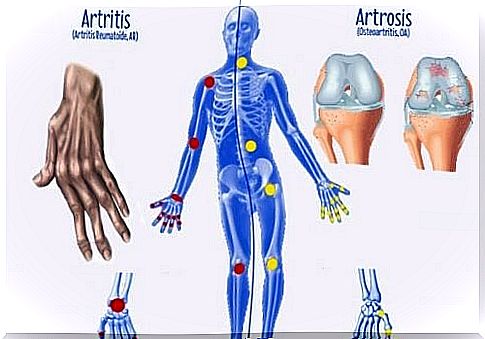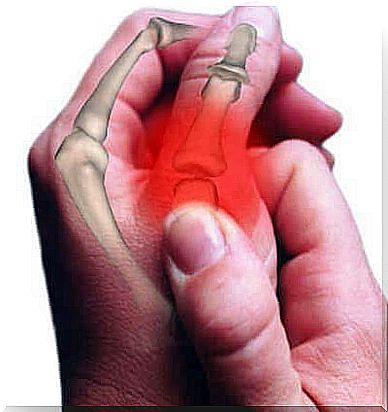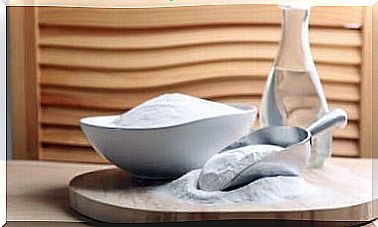Some Differences Between Osteoarthritis, Arthritis And Osteoporosis You Should Know
Even though both men and women can suffer from it, it is curious to see that degenerative diseases such as arthritis , osteoarthritis or osteoporosis affects women more.

Osteoarthritis, arthritis and osteoporosis are not the same diseases.
Whoever suffers from it knows this well, but who is in good health tends to confuse the terms.
It is one of the most common medical realities in the population.
The most problematic is undoubtedly their chronicity and their degeneration, for which there is no effective treatment which would make it possible to stop the origins.
We have palliative drugs, therapies focused on reducing inflammation, numbness or pain.
However, there is one thing that osteoarthritis, arthritis and osteoporosis have in common: they affect women more often.
Today in this article we want to walk you through the differences between these three conditions in order to understand them a little better. We are sure they will be of great help to you.
Osteoarthritis, the most common
Among rheumatic diseases, osteoarthritis is one of the most common. This is a disease whose origin is found in the degeneration of the cartilage.
- You should know that cartilage is a tissue that covers the end of the bones, and which helps them to move without touching each other.
- If the cartilage loses strength and quality, then friction, pain, inflammation …
- Osteoarthritis is very common in the hips, knees and ankles (anything that supports our body weight, in short).
- The pain tends to subside when the person is resting and stopped.
- On the other hand, you should know that there is no medication that can solve this condition. What is possible is to slow the progression of the disease, but never to eliminate it.
- If you have not developed this disease and want to prevent it, we advise you to practice gentle and regular sport. And also, to avoid obesity.
In addition, it is recommended to follow a balanced diet rich in vitamin C, as it acts as a precursor of collagen production.
On the other hand, if osteoarthritis is already a part of your life, you need to be careful that your diet never lacks vitamin C, minerals like calcium, phosphorus, magnesium, silicon and sulfur.
Arthritis, a disease not associated with old age
No, arthritis does not happen with years, nor is it a “normal” pain that we will have to coexist with once we get older.
Although there are many types of arthritis, this disease can appear in children and in individuals who have a very active, athletic life and in people who have an intense and demanding work rhythm.
First of all, you should know that arthritis has various origins:
- Immune origin: the immune system reacts adversely against the synovial membrane (the layer of tissue that covers the inner part of the joint capsule).
- Post-traumatic origin: this happens when we receive a blow or when we have spent a lot of time repeating the same movement (working in front of a computer, for example, can accelerate this problem).
- In addition, the accumulation of crystals generated by uric acid can lead to the classic “gout”.
Arthritis usually leads to severe, continuous pain. Osteoarthritis finds some relief with rest, but is more persistent.
To prevent arthritis, you should follow a diet rich in calcium, omega-3 and omega-6 acids, and do moderate physical activity outdoors, to sunbathe and synthesize vitamin D.
Osteoporosis, very common in women
Osteoporosis is a systemic, chronic and draining disease that affects our bones.
It is very common to take several years to detect it. All of a sudden, a fracture appears for no apparent reason.
It is a very difficult disease to live with on a daily basis. You should know that bone tissue is constantly being renewed, forming new structures and driving out old tissue.
- But sometimes, once menopause arrives, this balance is altered.
We stop forming new fabric with so much force and agility. And over time, there is less bone density, and therefore more risk of fractures. - With osteoporosis, the bones become porous, especially in the wrists, hips and vertebrae.
- To treat this disease, dietary supplements based on calcium and vitamin D are excellent.
- In addition, and always under medical recommendation, bisphosphonates are recommended. They indeed help calcium to penetrate into the bones and help them to regenerate.
In recent years, curiously, drugs have appeared on the market based on monoclonal antibodies. They are applied by injections and significantly improve the life of patients suffering from osteoporosis.
Main image © wikiHow.com









